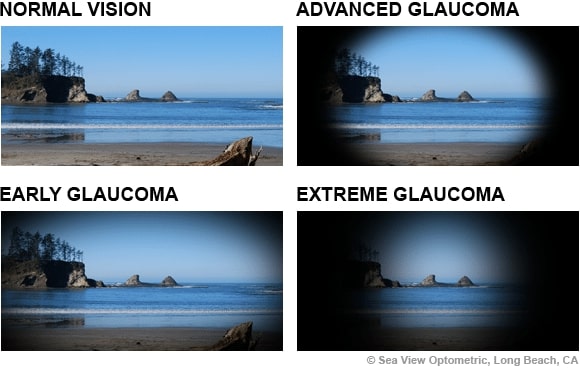Glaucoma is the leading cause of blindness and visual impairment in the US, and can affect patients of all ages, many of who do not experience any symptoms and may not be aware that they have the disease. Glaucoma actually refers to a group of diseases that cause damage to the optic nerve as a result of increased pressure within the eye, but can also be caused by a severe eye infection, injury, blocked blood vessels or inflammatory conditions of the eye.
There are two main types of glaucoma, open-angle and angle-closure. Open-angle glaucoma is the most common type of glaucoma and involves fluid in the eye not draining properly through the trabecular meshwork. Angle-closure glaucoma involves a sudden buildup of pressure in the eye and poor drainage because the angle between the iris and the cornea is too narrow.
Many patients do not experience any symptoms during the early stages of glaucoma, including no pain and no vision loss. This makes it difficult for many patients to know if they have the disease. But as glaucoma progresses, patients may experience a loss of peripheral or side vision, along with sudden eye pain, headache, blurred vision or the appearance of halos around lights.

Diagnosing Glaucoma
While some patients may experience symptoms from glaucoma as the disease progresses, others do not learn they have the condition until they undergo a routine eye exam. There are several different exams performed to diagnose glaucoma, including a visual field and visual acuity test. These tests measure peripheral vision and how well patients can see at various distances. Other tests may also be performed, such as tonometry to measure the pressure inside the eye and pachymetry to measure the thickness of the cornea.
Treatment For Glaucoma
Once glaucoma has been diagnosed, treatment should begin as soon as possible to help minimize the risk of permanent vision loss. There is no cure for glaucoma, so treatment focuses on relieving symptoms and preventing further damage from occurring. Most cases of glaucoma can be treated with eye drops, laser surgery or microsurgery. The best treatment for your individual case depends on the type and severity of the disease, and can be discussed with your doctor.
- Eye drops are used to reduce fluid production in the front of the eye or to help drain excess fluid, but can lead to redness, stinging, irritation or blurry vision. Patients should tell their doctor about any allergies they have to minimize the risk of side effects.
- Laser surgery for glaucoma aims to increase the outflow of fluid from the eye or eliminate fluid blockages through laser trabeculoplasty, iridotomy or cyclophotocoagulation.
- Minimally invasive glaucoma surgery, micro-stenting procedures and microsurgery can be performed to help lower eye pressure and protect against ongoing glaucoma damage. Your doctor will work with you to establish a long term plan to maximize your eye health throughout your lifetime.
Preventing Glaucoma
While there are no surefire ways to prevent glaucoma from developing, regular screenings and early detection are the best forms of protection against the harmful damage that the disease can cause. While anyone can develop glaucoma, some people are at a higher risk for developing disease. These people may include those who:
- Are over the age of 60
- African Americans over the age of 40
- Have a family history of glaucoma
- Have poor vision
- Have diabetes
Adult patients should have a comprehensive dilated eye exam at least once every one to two years, especially if they have a higher risk of developing glaucoma.


